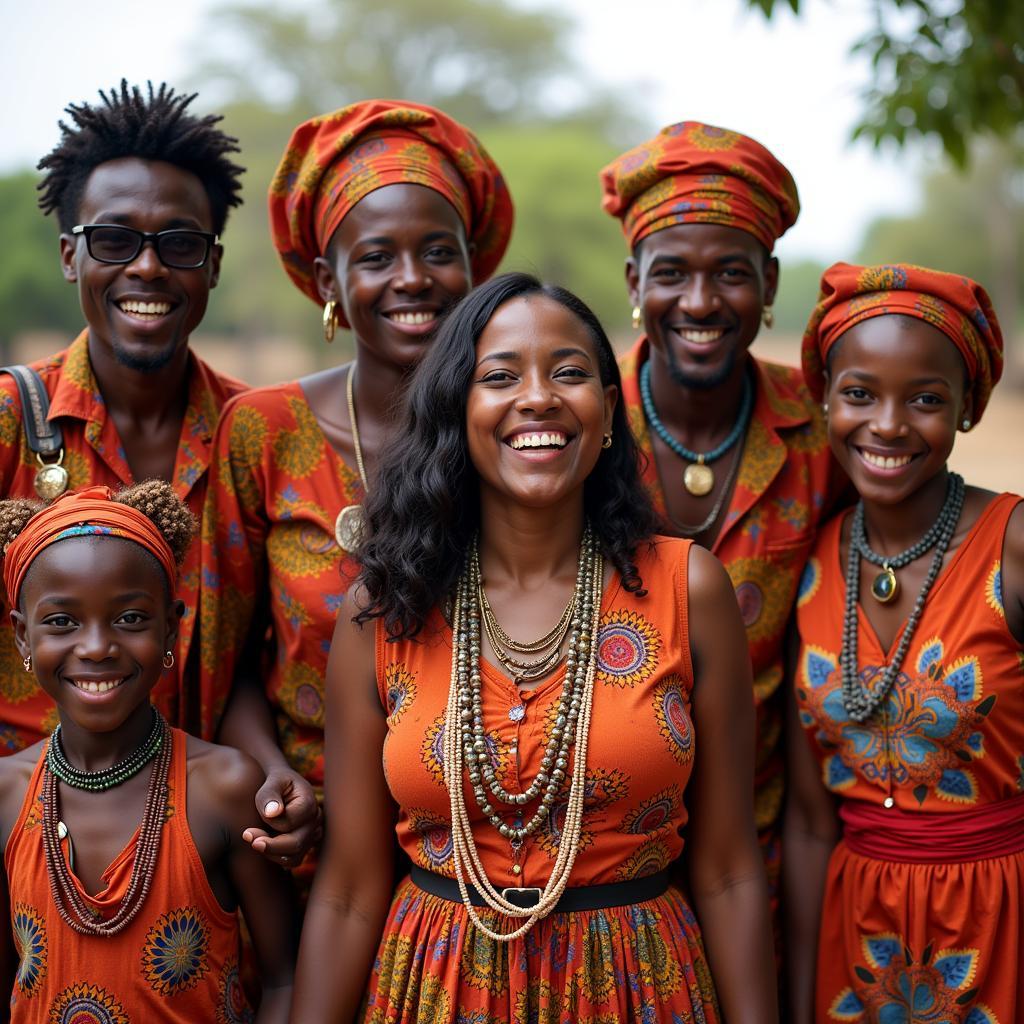Unveiling the Majesty of African Kente
African Kente cloth is more than just vibrant fabric; it’s a visual language, a woven history, and a symbol of prestige deeply rooted in the cultural heritage of the Ashanti people of Ghana and the Ewe people of Ghana and Togo. From its intricate patterns to its rich symbolism, kente represents a powerful expression of African artistry and tradition. Let’s explore the captivating world of African kente.
A History Woven in Threads: The Origins of African Kente
The history of African kente is shrouded in legend, with stories passed down through generations. One popular tale recounts two friends, Kurugu and Ameyaw, who, while hunting in the forest, stumbled upon a spider weaving its intricate web. Inspired by this natural wonder, they returned to their village and began experimenting with weaving raffia fibers, eventually developing the technique used to create the first kente cloth. Another legend attributes the origin of kente to the Ashanti King Nana Osei Tutu, who adopted it as a royal cloth in the 17th century. This royal patronage elevated kente to a symbol of power and prestige, cementing its place in Ashanti culture.
After this fascinating glimpse into history, you can explore different kente cloth styles at african kente cloth styles.
The Language of Color and Pattern: Decoding African Kente
Each kente cloth tells a story. The vibrant colors and intricate patterns aren’t merely decorative; they hold deep symbolic meaning. Gold represents royalty and wealth, while yellow signifies sanctity and fertility. Green embodies growth and renewal, blue signifies love and harmony, and red symbolizes political and spiritual moods. Black represents maturation and intensified spiritual energy. By combining these colors and patterns, weavers create complex narratives that reflect proverbs, historical events, philosophical concepts, and social values.
More than Just Cloth: The Cultural Significance of African Kente
African kente holds immense cultural significance beyond its aesthetic appeal. It’s worn during important ceremonies, festivals, and celebrations, marking milestones and signifying status. Traditionally, the right to wear specific kente patterns was restricted to royalty and members of the elite. Today, while kente is more widely accessible, it retains its symbolic power, representing a connection to heritage, pride, and cultural identity.
What is the significance of African kente in modern fashion?
African kente’s influence on modern fashion is undeniable. Designers around the globe incorporate its vibrant patterns and colors into contemporary garments, accessories, and home decor. This cross-cultural exchange celebrates the artistry of kente while introducing it to new audiences. Check out the regal display of african king queen in kente pants.
“Kente isn’t just a cloth,” says Adjoa Asamoah, a renowned Ghanaian textile artist, “it’s a living embodiment of our history, our values, and our artistic ingenuity.” This sentiment reflects the profound respect and admiration that kente continues to inspire.
Where does African kente originate from?
African kente originates primarily from the Ashanti people of Ghana, although it is also woven by the Ewe people of Ghana and Togo. You can delve deeper into the history of african ghana kente.
How is African kente made?
Traditionally, African kente is woven on narrow strip looms using silk and cotton yarns. Skilled weavers meticulously interlace the threads, creating intricate geometric patterns. This process requires patience, precision, and a deep understanding of the symbolic language of kente. For those interested in the artistry of kente creation, consider exploring african embroidery kente.
The Enduring Legacy of African Kente
African kente continues to hold a vital place in contemporary African culture. Its vibrant colors and symbolic patterns are a powerful reminder of a rich heritage and a testament to the enduring power of art and tradition. Whether worn during a special occasion or admired as a work of art, African kente remains a symbol of pride, identity, and the enduring spirit of Africa.
In conclusion, African kente is more than just a beautifully woven cloth. It’s a living testament to the rich cultural heritage of Ghana, a visual language, and a powerful symbol of African artistry and tradition.
FAQ
- What does the word “kente” mean?
- What are the primary colors used in kente cloth?
- Can anyone wear kente cloth, or is it restricted to certain groups?
- How can I identify authentic kente cloth?
- How should I care for my kente garment?
- What are some common kente patterns and their meanings?
- Where can I purchase authentic African kente?
For more information on African textiles and other aspects of African culture, explore other articles on our website. You might be interested in learning about traditional African music, cuisine, or other forms of art.
Need assistance with your African Kente inquiries? Contact us 24/7: Phone: +255768904061, Email: kaka.mag@gmail.com, or visit us at Mbarali DC Mawindi, Kangaga, Tanzania. We’re here to help!


